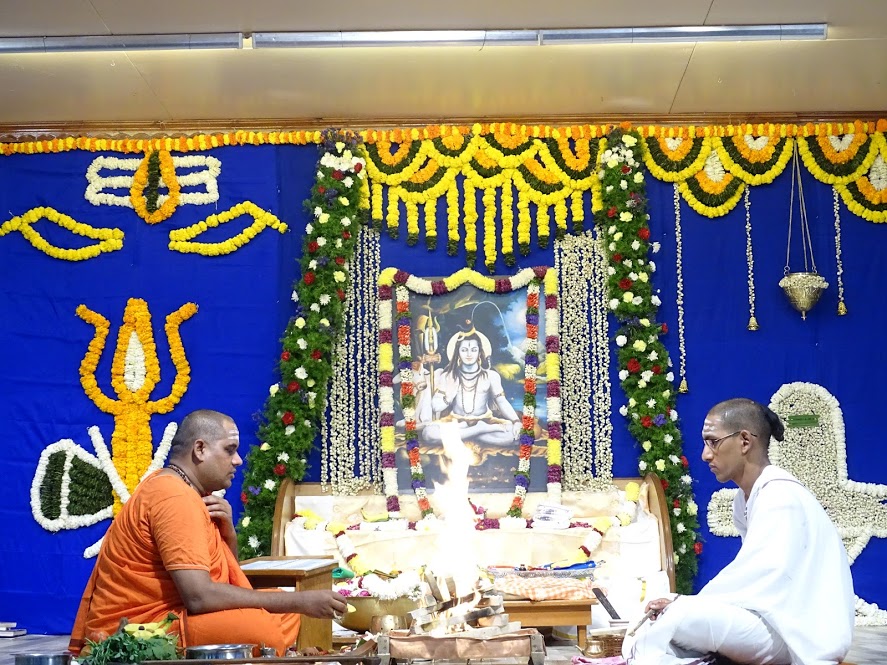Raja-Yoga - Chapter-2 : The First Steps. - 1. - Swami Vivekananda : Chicago 1893.
----------------------------------------------------------------------------------
Thursday, July 01, 2021. 6:43.AM.
Chapter-2 : The First Steps. - 1.
Post-2-1.
----------------------------------------------------------------------------------
Râja-Yoga is divided into eight steps. The first is Yama — non-killing, truthfulness, non-stealing, continence, and non-receiving of any gifts. Next is Niyama — cleanliness, contentment, austerity, study, and self-surrender to God. Then comes Âsana, or posture; Prânâyâma, or control of Prâna; Pratyâhâra, or restraint of the senses from their objects; Dhâranâ, or fixing the mind on a spot; Dhyâna, or meditation; and Samâdhi, or superconsciousness. The Yama and Niyama, as we see, are moral trainings; without these as the basis no practice of Yoga will succeed. As these two become established, the Yogi will begin to realise the fruits of his practice; without these it will never bear fruit. A Yogi must not think of injuring anyone, by thought, word, or deed. Mercy shall not be for men alone, but shall go beyond, and embrace the whole world.
2.
The next step is Asana, posture. A series of exercises, physical and mental, is to be gone through every day, until certain higher states are reached. Therefore it is quite necessary that we should find a posture in which we can remain long. That posture which is the easiest for one should be the one chosen. For thinking, a certain posture may be very easy for one man, while to another it may be very difficult. We will find later on that during the study of these psychological matters a good deal of activity goes on in the body. Nerve currents will have to be displaced and given a new channel. New sorts of vibrations will begin, the whole constitution will be remodelled as it were. But the main part of the activity will lie along the spinal column, so that the one thing necessary for the posture is to hold the spinal column free, sitting erect, holding the three parts — the chest, neck, and head — in a straight line. Let the whole weight of the body be supported by the ribs, and then you have an easy natural postures with the spine straight. You will easily see that you cannot think very high thoughts with the chest in. This portion of the Yoga is a little similar to the Hatha-Yoga which deals entirely with the physical body, its aim being to make the physical body very strong. We have nothing to do with it here, because its practices are very difficult, and cannot be learned in a day, and, after all, do not lead to much spiritual growth. Many of these practices you will find in Delsarte and other teachers, such as placing the body in different postures, but the object in these is physical, not psychological. There is not one muscle in the body over which a man cannot establish a perfect control. The heart can be made to stop or go on at his bidding, and each part of the organism can be similarly controlled.
3.
The result of this branch of Yoga is to make men live long; health is the chief idea, the one goal of the Hatha-Yogi. He is determined not to fall sick, and he never does. He lives long; a hundred years is nothing to him; he is quite young and fresh when he is 150, without one hair turned grey. But that is all. A banyan tree lives sometimes 5000 years, but it is a banyan tree and nothing more. So, if a man lives long, he is only a healthy animal. One or two ordinary lessons of the Hatha-Yogis are very useful. For instance, some of you will find it a good thing for headaches to drink cold water through the nose as soon as you get up in the morning; the whole day your brain will be nice and cool, and you will never catch cold. It is very easy to do; put your nose into the water, draw it up through the nostrils and make a pump action in the throat.
4.
After one has learned to have a firm erect seat, one has to perform, according to certain schools, a practice called the purifying of the nerves. This part has been rejected by some as not belonging to Raja-Yoga, but as so great an authority as the commentator Shankarâchârya advises it, I think fit that it should be mentioned, and I will quote his own directions from his commentary on the Shvetâshvatara Upanishad: "The mind whose dross has been cleared away by Pranayama, becomes fixed in Brahman; therefore Pranayama is declared. First the nerves are to be purified, then comes the power to practice Pranayama. Stopping the right nostril with the thumb, through the left nostril fill in air, according to capacity; then, without any interval, throw the air out through the right nostril, closing the left one. Again inhaling through the right nostril eject through the left, according to capacity; practicing this three or five times at four hours of the day, before dawn, during midday, in the evening, and at midnight, in fifteen days or a month purity of the nerves is attained; then begins Pranayama."
To be continued ....
=======================================================================================










Comments
Post a Comment